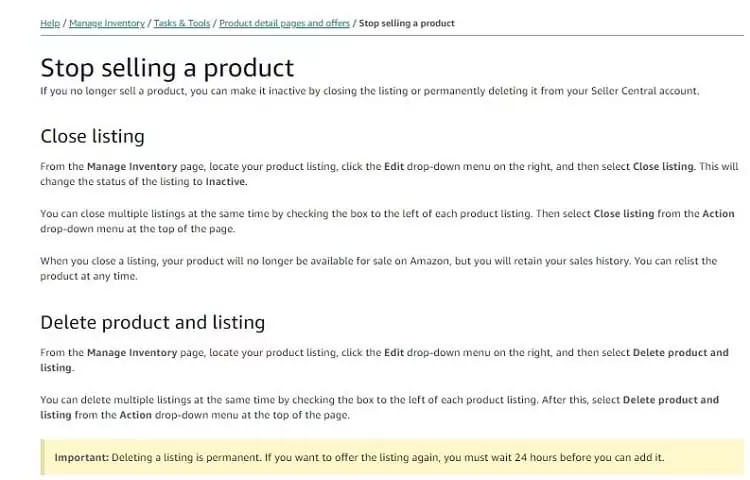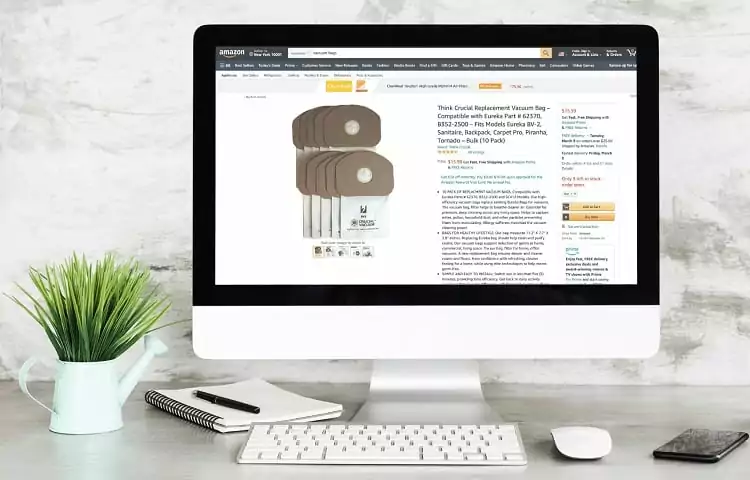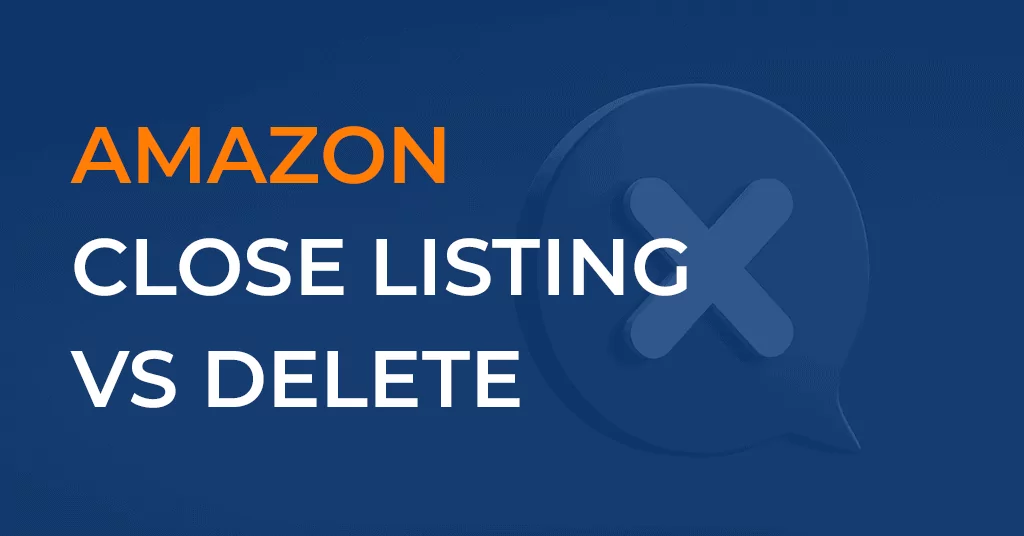Amazon is one of the most successful business outings in the world today.
The company runs one of the most successful online marketplaces globally, catering to the needs of millions of buyers and sellers every day.
Amazon finds it possible to do all this thanks to its pillars of strength – the Amazon FBA workforce and millions of vendors on the forum.
Numerous vendors sell their goods on Amazon. They often indulge in Amazon’s FBA (Fulfillment By Amazon) service, where they have to ship inventories to the company, and Amazon takes care of the rest.
Sometimes, vendors might wish to cancel or close their listings or even delete their vendor accounts. Let’s take a look at the difference between the two concepts.
What does ‘Close Listing’ mean?

When you are a seller on Amazon, you may have multiple product listings on your Amazon Seller Central account.
Assuming you do not wish to continue selling a particular product for some time, you can close its listing on the online marketplace. This option does not remove your product’s record from your inventory. It merely becomes unavailable for purchase.
Closing a listing is not a permanent change. You can relist the product whenever you wish. The SKU and other inventory details are retained even during the closing of a listing.
You may want to shut down a listing temporarily due to unavailability of stock, or because the product is not in demand, etc. But, remember, you can always bring it back online.
You can close listings from your Amazon Seller Central account. Once you log in to the account, go to the ‘Inventory’ tab. Then, select ‘Manage Inventory.’
Now you should see all your product listings. First, find the active listings using the search filter. Next, locate the listing you want to close and select ‘Close Listing’ from the drop-down menu.
That will close your listing automatically, without confirmation, within 24 hours.
What does ‘Delete Listing’ do?

As the name suggests, the ‘Delete Listing’ feature ensures that the product and its subsequent details are permanently removed from your seller profile.
The product SKU and sales history, along with the product information, are permanently removed. Sellers generally choose to delete a listing when they do not plan to sell the product again in the future.
It is crucial to delete the product SKUs after updating the inventory quantity to zero before deleting a listing. Failure to update the inventory quantity to zero may result in your product staying online.
You can delete a product listing from your Amazon Seller Central account quickly. After logging in to the account, go to the ‘Inventory’ tab and select ‘Manage Inventory.’
You will now see all your listings. Locate the listing, or multiple listings, that you want to delete, and select ‘Delete product and listing’ from the drop-down menu for the product. Amazon will ask for confirmation about the deletion. Click ‘Ok’ to delete.
Sellers must bear in mind that deletion of a listing is a permanent process. You cannot revitalize your listing after deleting it. If you want to list the same product again after deletion, you will have to enlist it again using its product ID.
How does a seller decide whether they want to close a listing or delete a listing?

The difference between closing and deleting a listing is minute but pretty straightforward. Closing a listing is like freezing an asset.
Sellers can use it at a later time when it is not frozen. On the contrary, deleting a listing is a permanent change in your inventory. The product that you delete is no longer seen in your stock. You need to list that product again if you wish to sell it.
When you close a listing, you can relist it later using the same SKU. Thus, the product does not leave your inventory when you close its listing.
You can also achieve closing a listing by turning the inventory quantity to zero. When you do that, your product will be listed under ‘Inactive Listings’ in your inventory, same as a Closed listing.
If you want to discontinue selling a product variable, then it does not make sense to delete the listing. Closing a listing will create a “ghost” listing in your inventory.
Some vendors have found it beneficial to delete every listing that has run out of stock. As soon as the inventory quantity reaches zero, these vendors will delete that listing. When they get their hands on new stock, they will relist the same item again.
There have been reports of a few glitches in Amazon’s listing process. A few sellers have complained that their inactive “ghost” listings have been online even after their inventory count was zero.
As a result, buyers were purchasing items that were not available for sale. While Amazon has denied that happening, it is a commonly observed discussion in its seller forums.
To conclude
Amazon allows sellers to close or delete their listings as they wish.
For example, if a seller runs out of stock or does not wish to sell an item, for the time being, they can choose to close the listing of that product from their Amazon Seller Central account.
That will make the product unavailable to buyers, but the listing will still be available to the seller if they want it back online.
On the other hand, deleting a listing is a permanent change. Once a seller deletes a listing from their profile, they cannot activate it again. It is gone permanently from their inventory.
All product details, sales data, and SKU sets are deleted along with the product listing. Only when sellers do not wish to sell an item in the future should they delete their listing. However, some vendors use this feature to delete their listings when their inventory reaches zero to prevent glitches.
Some sellers have complained that whenever Amazon updates its software, the sellers’ inactive listings are reactivated automatically. As a result, customers purchase products that are not available for sale.
That results in a chaotic sales chart for the vendors. Therefore, keeping an eye on your inventory is an essential part of being a seller on Amazon.
https://www.futurestatemedia.com/what-happens-when-you-close-a-listing-on-amazon-lose-rank



